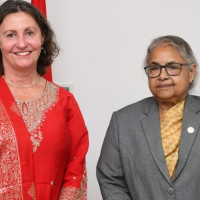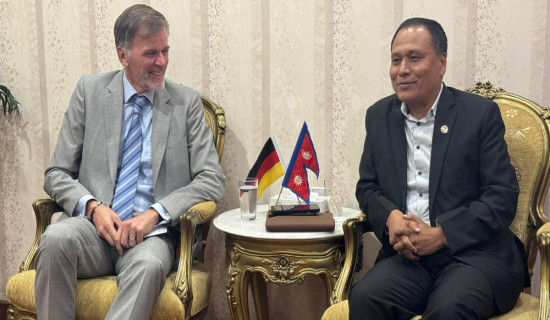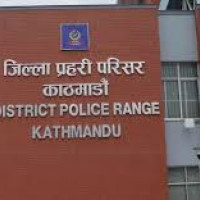- Thursday, 16 October 2025
Hike Tobacco Tax
Each year, tobacco consumption causes approximately 27,110 deaths in Nepal, accounting for nearly 11 per cent of the total number of annual deaths. Although the health burden is severe, efforts by governments towards tobacco consumption reduction through laws, policies, and regulations have been identified at the international level. On February 6, 2025, the Ministry of Health and Population sanctioned a new directive calling for 100 per cent pictorial warnings on tobacco products to be implemented from mid-July 2025.
Yet, Nepal still ranks among the lowest in tobacco tax in South Asia. In the fiscal year 2024/25, the government projects tobacco revenue of Rs. 31.2 billion. But, when the costs of direct and indirect treatment of non-communicable diseases resulting from tobacco use, such as cancer, respiratory disease, and cardiovascular disease, are included, the economic loss comes to approximately Rs. 45 billion each year.
Tobacco use is still prevalent in Nepal, where 34 per cent of its population consumes tobacco products. It is increasing, particularly among youth, who are increasingly turning to hookah and e-cigarettes. The World Health Organisation (WHO) suggests a 75 per cent tax rate on the cost of tobacco products. However, only 41 per cent of taxation is imposed by Nepal today, which is much less than the WHO recommendation and even less than India (58 per cent), Pakistan (52 per cent), Bangladesh, and Sri Lanka (67 per cent).
Tobacco taxation generates merely 2.49 per cent of the country's total revenue in Nepal, but in Bangladesh, 9.53 per cent of revenue is collected. This comparison shows that Nepal has a vast potential still untapped in revenue generation through increased tobacco taxation. In the financial years 2021/22 and 2022/23, Nepal raised excise duty by 25 per cent and 20 per cent, respectively, which yielded more revenue collection. No boost was given in the past two years, so the projections were unrealistic. For instance, while Rs. 38 billion in excise revenue was initially estimated for the year 2023, the latest estimate came as low as merely Rs.31 billion, demonstrating how crucial tax rises are to obtaining accurate and improved revenue collection.
If Nepal raises excise duty on tobacco, consumption and health risk can be minimised. Evidence indicates that an increase in tax by 35 per cent can further increase Rs. 8 to 10 billion in revenue and decrease consumption by 4 per cent to 8 per cent. Likewise, a 60 per cent increase can result in Rs. 13 to 17 billion (1.57 per cent of the revised total tax revenue in FY 2024/25 and decrease consumption by 7 per cent to 13 per cent.)
A Nepal Development Research Institute study contradicts assertions that elevated cigarette taxes stimulate illicit trade. The study found counterfeit cigarettes comprised a mere 0.33 per cent of the market in Kathmandu and Pokhara, primarily consisting of high-priced Indonesian imports rather than contraband from India. Illicit drug use is influenced by individual agency, and not solely determined by economic factors.
To mitigate the challenges posed by declining foreign aid and rising public debt, a potential solution is to increase taxation on goods detrimental to public health and economic productivity, such as tobacco products. Raising the 35 per cent to 60 per cent increment in the forthcoming fiscal budget to reach India's tax level in 2–3 years might be a win-win scenario. This would be advantageous for Nepal's public health and economic well-being.
















